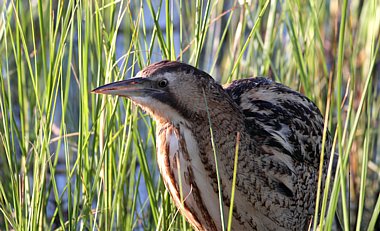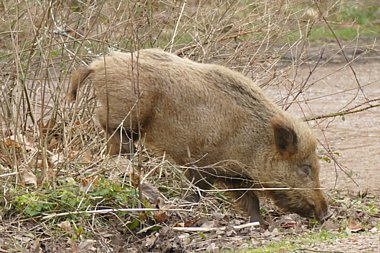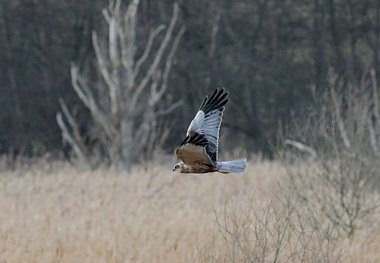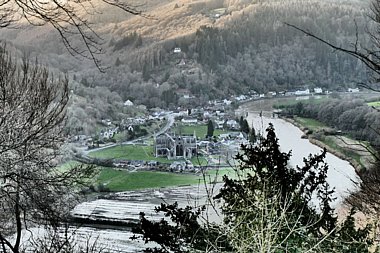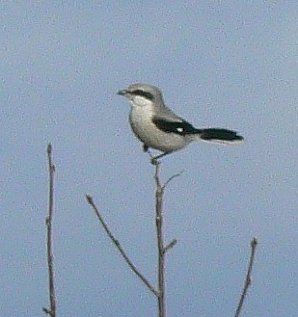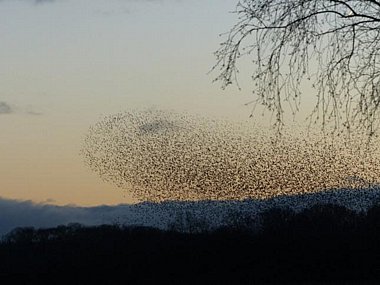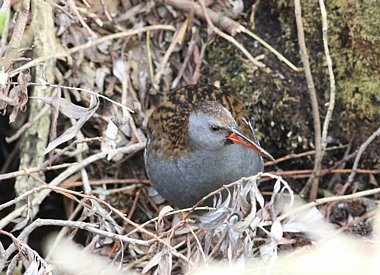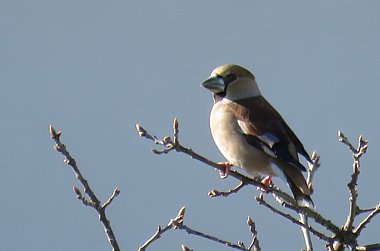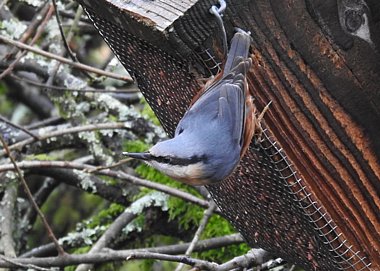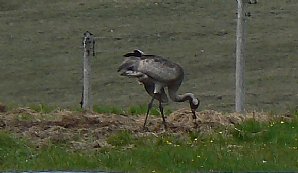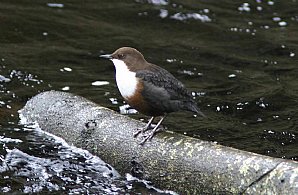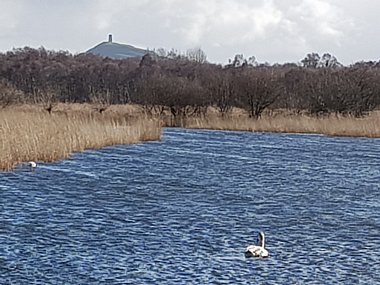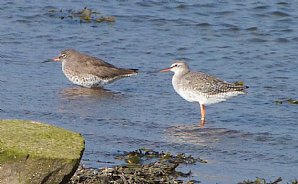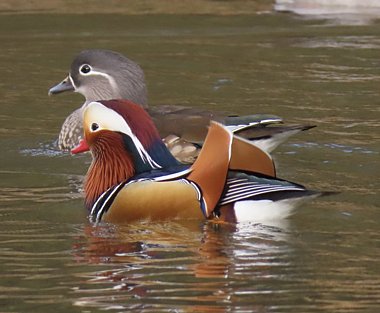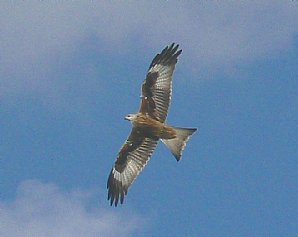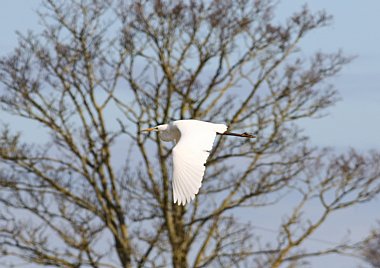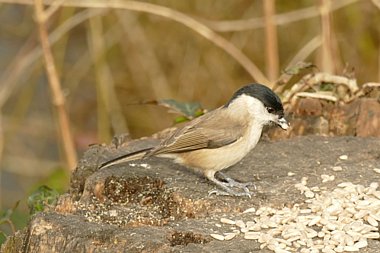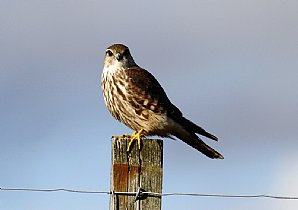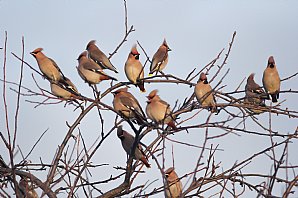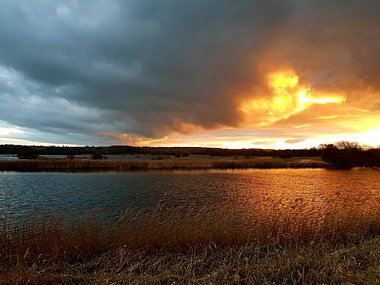Forest of Dean and Somerset Levels
Excellent winter birding, including some difficult and highly sought-after UK species.
| Destination | |
|---|---|
| Focus | |
| 2026 Dates | |
| Duration | 8 Days |
| 2026 Price | £2295 pp £350 single supplement. Deposit £300 |
| Max Group Size | 7 per guide |
This is an opportunity to enjoy some of the best winter birdwatching in two fascinating and distinct areas of the south-west of England. We will search for elusive and sought-after woodland species, and also seek wintering waders and wildfowl in estuary and wetland locations. The first part of our holiday is spent in the Forest of Dean, around 35 square miles of mixed woodland nestled between the River Severn and River Wye on the Gloucestershire/Welsh border. The Forest holds some largest areas of broadleaf woodland left in England, and is arguably the best place in the country to see Hawfinch and Goshawk, two of the UK’s hardest-to-find breeding species and late-February is the best time of year to see both.
The Forest of Dean also supports a large population of free-living feral Wild Boar. There is now an established population, originating from an illegal release in 2004. Although unofficial, the return of this ‘keystone’ species forms part of a suite of three new mammals now resident in the Forest of Dean, with Pine Martens and European Beaver also recently reintroduced. All of these reintroductions are playing their part in the restoration of a more natural woodland ecosystem. Whilst we can try to see Wild Boar and stand a realistic chance of seeing them, Pine Martens are more elusive. Among many other sites we visit in the Forest of Dean, we’ll visit the famous Symonds Yat Rock viewpoint, which not only gives stunning views over the River Wye, but is home to a resident pair of Peregrine and even cliff-nesting Canada Geese!
Part of our Gloucestershire tour is a day exploring the nearby Severn Estuary, an excellent place for wintering wildfowl and waders, and we may see White-fronted Goose, Bewick's Swan, waders, raptors and many other wildfowl species. We base our visit around WWT Slimbridge, founded by Peter Scott, and may visit other sites on the east side of the Severn. Wildfowl and waders will be much in evidence, including Black-tailed Godwit, Avocet, Golden Plover, Snipe and Ruff with a chance of Jack Snipe. Peregrine, Merlin, the occasional harrier and Short-eared Owl are also possibilities. Other wintering birds may include Bittern, ‘white-winged’ Gulls and Water Rail.
In the wonderful and contrastingly different Somerset Levels, we'll be looking for wintering wildfowl and wetland species, including Bittern, Water Rail, Marsh and Hen Harriers, Great-white Egret, and thousands of wintering duck, that include Pochard, Shoveler, Gadwall, Teal and Wigeon, amongst many other wetland species. We should see some of the local population of Common Crane, that are now well established since their reintroduction which began here in 2010. We will of course be hoping to get close to the UK's largest Starling roost, with up to a million birds which, if being attacked by raptors will go into their mesmerising murmuration, a truly unforgettable experience!
KEY MOMENTS
- The Forest of Dean searching for Goshawk and Hawfinch
- Twilight walks in the Forest of Dean looking for Wild Boar
- The Severn Estuary for wildfowl & waders
- The Somerset Levels for Cranes, egrets, raptors and wetland birds
- The amazing Starling murmuration
MEETING PLACE:
Rail pick-up is from Gloucester station, and drop-off at Bridgewater station. Please contact our office for full details.
If travelling by car please meet at our first night's accommodation at 3pm, The Speech House Hotel - details of which will be sent out in your Final Information Pack. You can leave your vehicle parked here for the duration of your holiday (please note all vehicles are left at the owners own risk) and you will be returned here at the end of the holiday
Day 1 - Saturday
After settling in, we have a briefing, and may take a short walk nearby to familiarize ourselves. Our excellent hotel is perfectly situated in the heart of the Forest, with walks directly into the woods and the possibility of Hawfinch nearby. Our excursions from here are within a short drive, giving us more time for birdwatching. The hotel dates back to the 17th century when it was used as a hunting lodge, and is full of character with an excellent and varied menu. Four nights at Speech House Hotel, Forest of Dean.
Day 2 - Sunday
A day exploring the Forest of Dean, where our main targets will be Hawfinch and displaying Goshawk. On a sunny day the Goshawks could be displaying, hopefully we can see them performing their magnificent ‘butterfly’ and even their ‘sky-dancing’ display flights. Resident Hawfinch numbers can be boosted in winter by European birds and rove the forest in small elusive groups, sometimes in mixed feeding flocks of Common Crossbill, Redpoll, Siskin and Brambling. Other species including Redwing, Fieldfare, Marsh Tit, Nuthatch, and Treecreeper should be encountered and if very lucky, rare Lesser-spotted Woodpecker and Firecrest. Over recent years the Forest has held wintering Great Grey Shrike too. For those who wish to, we can take twilight walks looking for Wild Boar.
Day 3 - Monday
Today we drive down from the forest escarpment into the Severn Vale, where we spend the day exploring the Severn Estuary, an excellent place for wintering wildfowl and waders, and should see White-fronted Goose, Bewick's Swan, a variety of waders, raptors and more wildfowl. We visit WWT Slimbridge, founded by Peter Scott, and although this will form the centre of our activities, we may visit other sites such as Frampton on Severn. Wildfowl and waders will certainly feature with Pintail, Lapwings mixed with Golden Plover, Ruff, and these places often turn up Peregrine, Merlin, Hen or Marsh Harrier and Short-eared Owl. Other wintering birds may include Bittern, Water Rail, Iceland, Glaucous and Mediterranean Gulls.
Day 4 - Tuesday
Another day in the Forest to find species we may have not yet seen, including a visit to Symonds Yat Rock viewpoint which not only gives stunning views over the River Wye but also has a resident pair of Peregrine and Raven. A good location for other interesting birds, with Goshawk, Red Kite, Buzzard, Sparrowhawk, a Cormorant roost and perhaps a chance of a passing Goosander too. Additionally, we can explore the various water bodies around the Forest looking for Mandarin Ducks Goosander, Dipper, Grey Wagtail and Kingfisher. In the evening we can again try to see Wild Boar, and perhaps encounter a Woodcock or hear a Tawny Owl.
Day 5 - Wednesday
After a little more time in the Forest and Wye Valley areas, we transfer to the Somerset Levels, where we stay for three nights. After arrival and settling-in, we should have time to begin exploring this excellent area for wildlife, including the awesome Starling murmuration.
Our accommodation is at the comfortable and friendly Meare Manor, a historic manor house rebuilt in 1802, and now a 4-star guest house, perfect for our needs and only a short drive to all birdwatching locations, with RSPB’s Ham Wall and Shapwick Heath a stone’s throw. Three nights at Meare Manor Guest House.
Day 6 - Thursday
A full day exploring the levels, where the birding may include Great White and Cattle Egret, Bittern, Marsh and Hen Harriers, Water Rail, and huge flocks of wintering duck. Great-crested and Little Grebes fish the open water while Kingfisher zip up the ditches giving their piping calls. Loud bursts of song from Cetti’s Warbler come from the reeds, and, if we’re lucky, the subtle ‘pings’ of Bearded Tit can be heard as small flocks fly low over the reedbeds. Barn Owl hunt the levels at dusk, and Otter are resident and are sometimes seen. We’ll explore the reserves at Ham Wall and Shapwick Heath, which combined with many others, are a part of the nationally important Avalon Marshes, comprising of fenland and also created from old peat workings.
Day 7 - Friday
Another day of wetland exploration seeking species we may have not yet seen. A visit to the south of the Somerset Wetlands to the RSPB reserves at Swell Wood to see the Heronry and Greylake should mean we encounter some Common Crane, now firmly established as a breeding population. Other reserves we may visit include Catcott (an area of grazing marsh which floods in the winter providing an excellent area for foraging wildfowl), and Westhay Moor, all part of the mystical Avalon Marshes, a mosaic of marsh, reed beds and lakes.
Day 8 - Saturday
Breakfast and departure. We will drop off at Bridgewater Train station for trains departing from 10am onwards. Alternatively, if you wish to travel back from Gloucester Train Station we recommend looking at trains departing here from 2pm onwards. If travelling by car, your guides will transfer you back to The Speech House Hotel in order to collect your vehicle.
Please note: all itineraries are given as a guide only. Actual holiday content may vary according to the judgement of your guide, and elements beyond our control (eg weather).
Expect a wide variation in weather conditions, which can be wild and unpredictable, with temperatures perhaps averaging around 15°C. Sunshine, rain and strong winds are all possible, and you will probably experience a bit of everything. Biting insects are not expected. Please bring waterproof walking boots or shoes, weatherproof clothing and a small rucksack. The holiday will be run at a relaxed pace, with time for photography and botany as well as fabulous birdwatching in a spectacular setting! There will be short to moderate (1 to 3 mile) walks most days mainly on well walked tracks and paths.
What's included in your holiday price
• Seven nights comfortable en-suite hotel accommodation. We choose from our personally inspected shortlist, where birders are welcome and the hospitality is special. Guests are never expected to share. All rooms are en-suite. Full details with your joining pack.
• Full Scottish breakfast and dinner from Saturday evening till Saturday morning, packed lunch each day from Sunday to Friday.
• All transport by comfortable minibus.
• Guidance from a professional Group Leader.
What's not included in your holiday price
• Insurance, drinks and other items of a personal nature.
Other birding and wildlife holidays in Southern England
- Isles of Scilly for birders
- Cornwall in Spring
- Isles of Scilly in Spring
- NEW! Winter Birdlife of Devon & Dorset
- West Cornwall in Autumn for birders
Why choose Heatherlea for your birding and wildlife holiday?
Heatherlea is one of Britain's leading wildlife holiday operators. In 2019 we celebrate our 29th Anniversary with more choice than ever, both in Scotland and overseas. Relax and enjoy yourself, as we do all the planning! Above all, we make it our business to show key wildlife to you. Our fully inclusive guided holidays concentrate on the real experience, and we take time to ensure that each of our guests enjoys everything we do.
- We have been organising birding and wildlife holidays for 30 seasons, and have a highly experienced and capable office team. We also offer a telephone and email service outside normal office hours.
- We are a small company, run BY birders FOR birders. Come and see!
- Heatherlea are Mainland Scotland’s FIRST ‘5-Star Wildlife Experience!’ This is the highest available grading, classified as ‘exceptional’ by visitScotland.
- Heatherlea hold full Tour Operator Insurance for your added protection.
- Heatherlea is a limited company, registered in Scotland. We are also registered to pay VAT, which is included in your holiday price as quoted on this page.
- Once your holiday is confirmed in writing by us, we promise not to surcharge the price for any reason.

